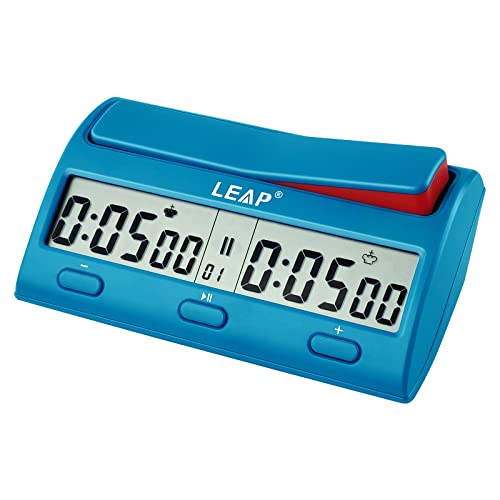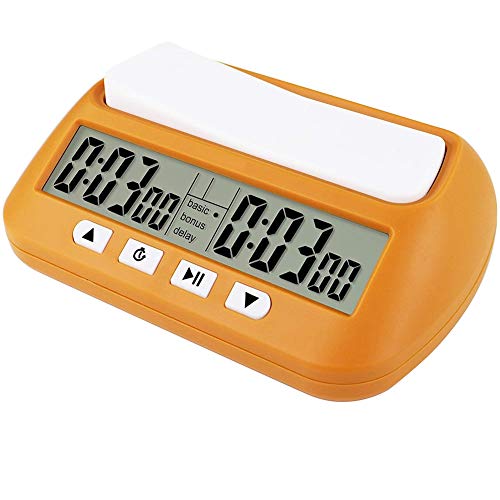Understanding the Basics of Chess Clocks: What They Are and Why We Need Them
What is a Chess Clock?
Chess clocks are devices used to manage the time taken by each player during a chess match. They consist of two individual timers, one for each player, that start counting down when it’s their turn to make a move. The necessity of a chess clock arises from the competitive nature of the game. Each player is allotted a specific amount of time to think through their moves, ensuring that the game progresses at a balanced pace. Playing with a chess clock not only adds excitement but helps develop focus and time-management skills, which are essential for serious players.
The Importance of Using a Chess Clock
Using a chess clock affects how we play the game. It creates a sense of urgency, motivating players to think critically but quickly. If you’re feeling overwhelmed by the number of possible moves, the ticking timer can help you make quicker decisions while playing strategically. Without a clock, matches can drag on during planning stages, leading to fatigue and potentially a loss of interest. Thus, for anyone looking to improve their gameplay, familiarising themselves with chess clocks is vital.
Key Features to Look for in a Chess Clock: Streamlining Your Game
Understanding Time Controls
When choosing a chess clock, consider the different time controls available. Basic models allow you to set standard time limits for players. However, more advanced clocks offer multiple time settings, including increments and delay options. For instance, in tournament situations, a clock that supports a one-second delay can give players an extra second before their time starts to count down after they make their move.
Ease of Use and Display
We encourage you to look for a clock with a clear and easy-to-read display. A digital clock will typically have larger numbers and provide a variety of information, like time left for each player. Additionally, the buttons should be intuitive and responsive, allowing players to stop and reset timers effortlessly during a game. Touch-sensitive clocks are increasingly popular, giving a modern feel while remaining user-friendly.
Portability and Build Quality
If you play chess on the go, portability is a significant factor. Lightweight and compact designs are perfect for taking to clubs or tournaments. When analysing the build quality, heavy-duty materials will ensure your clock withstands routine use and transport. We recommend choosing a clock that fits comfortably in your bag without occupying too much space.
Top Chess Clock Recommendations: Our Picks for Every Budget
Best Budget Option
For those on a budget, we recommend looking into analogue clocks. These classic models are reliable and easy to operate, with a straightforward design that suits beginners well. An economical digital clock can provide more features for a similar price, often including various timing options. Brands offering these products focus on delivering affordability without sacrificing functionality.
Mid-Range Selection
Investing a bit more allows us access to impressive digital models with advanced features like programmable time settings and delay options. These clocks often have a durable build and stylish appearance, making them not only functional but also visually appealing. Look out for models that can store multiple settings for different players, which add to convenience.
Premium Picks for Enthusiasts
For serious chess players, high-end digital clocks offer sophisticated features, including multiple timing modes, Bluetooth compatibility, and robust construction. These advanced models cater to professional play, with accuracy and precision that can greatly enhance your game experience. They often feature high-resolution displays and comprehensive timer settings, making them an excellent long-term investment for enthusiasts.
Setting Up Your Chess Clock: Simple Steps for Beginners
Connecting to Power
To get started, ensure your chess clock is powered correctly. Many models operate on batteries, so check that they are installed and charged before commencing play. If your clock requires a power cord, locate an accessible outlet. Setting position on a flat surface is essential to prevent the clock from tumbling over during an exciting game.
Setting Time Controls
Next, we proceed to set the time controls according to the game rules. Power on the clock using the designated button and begin by selecting the time limit for each player. If you’re unsure, consult the manual that comes with your clock; this usually contains step-by-step instructions tailored to the specific model. Once set, ensure both timers are cleared before starting the match.
Maximising Your Chess Experience: Tips and Strategies for Clock Use
Develop a Time Management Strategy
Boosting your game with a chess clock is all about mastering time management. Develop strategies where you allocate more time for complex positions and less for straightforward ones. By maintaining this balance, you can ensure that your time is spent efficiently throughout the match. Always remember, it’s not just about winning, but also applying your moves thoughtfully.
Practising with a Timer
Regular practice with a chess clock can make a significant difference in your gameplay. Try setting timers for different scenarios, allowing yourself to get used to making quicker decisions under pressure. Experimenting with various time controls can also help you find what suits your playing style best. Ultimately, this will enhance your ability to remain calm and decisive during actual competitions.































